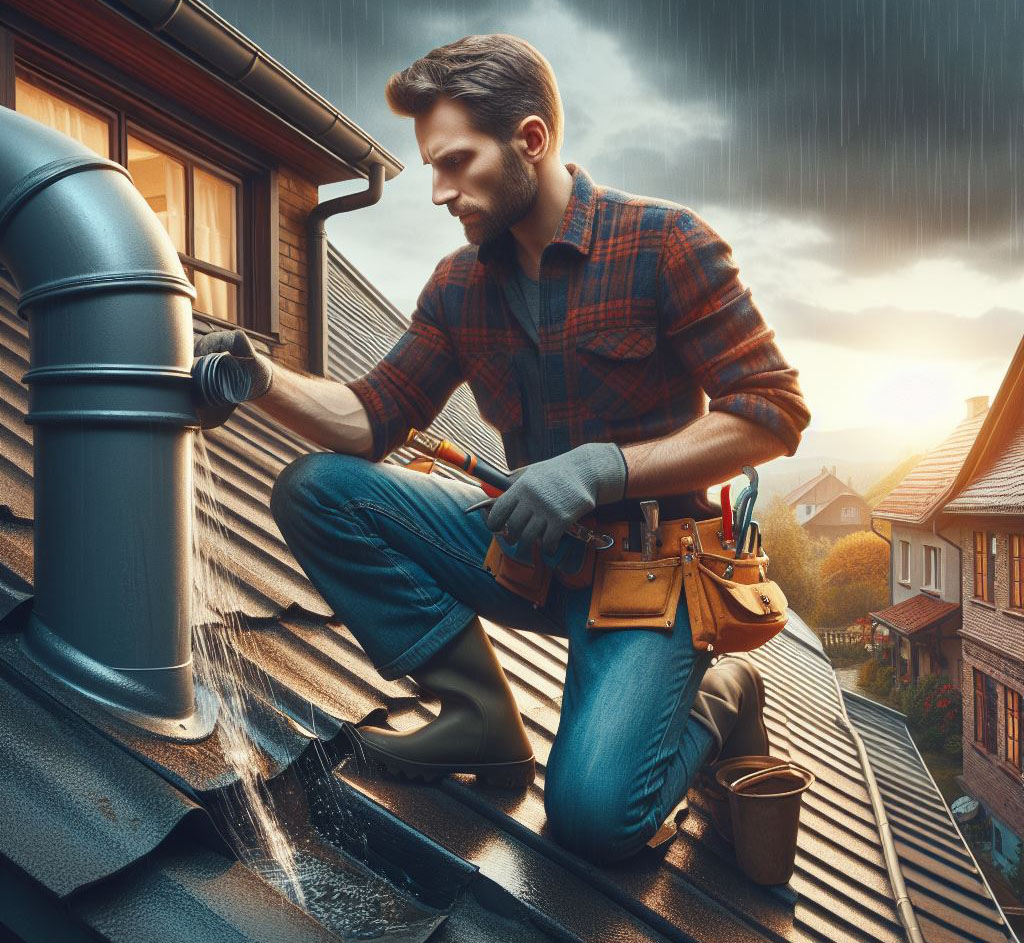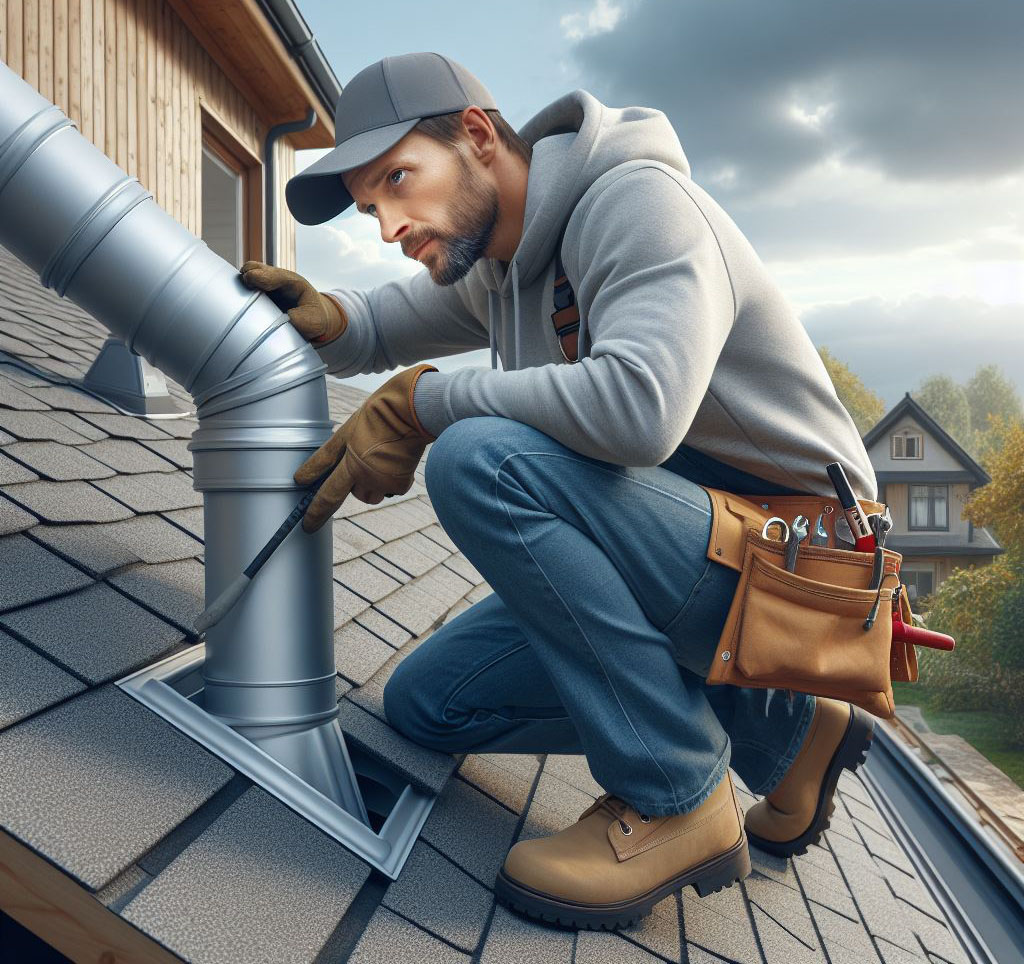The integrity of your home hinges on the health of every component, right down to the rooftop vent pipes. These critical elements ensure a harmonious balance between indoor and outdoor air, whisking away moisture and odors before they infiltrate the sanctity of your home. Yet, despite their importance, rooftop vent pipes often fly under the radar—until, inevitably, a leak springs, demanding immediate attention.
Leaks can emerge from an assortment of culprits: the relentless battering of inclement weather, the inevitable decay of time on materials, or perhaps a less-than-stellar installation job. Pinpointing the exact cause is crucial, as it informs the repair approach and prevents future issues.

Understanding Rooftop Vent Pipes
Rooftop vent pipes serve as the lungs of your home, allowing it to breathe by venting sewer gases outside, thus maintaining air quality. These pipes protrude from your roof, silent sentinels ensuring your home’s air remains clean.
There are primarily two types of vent pipes:
- PVC pipes: Predominantly found in modern constructions, these white plastic pipes are favored for their lightweight and ease of handling.
- Cast iron pipes: The stalwarts of older homes, offering durability but requiring a bit more muscle to repair or replace.
Identifying the Leak
Detecting a leak in your rooftop vent pipe is akin to diagnosing a patient—the symptoms might be obvious, or they might require a bit more investigation. Here’s how to proceed:
- Visual Inspection: Arm yourself with a sturdy ladder and conduct a thorough inspection of the vent pipe and its surroundings. Look for any visible signs of damage, such as cracks, gaps, or wear, that could be the source of the leak.
- Water Test: If the leak’s source remains elusive, enlist the help of a friend for a water test. One of you should pour water over the area while the other watches from inside for any water ingress. This method can help pinpoint the exact location of the leak.

Tools and Materials
Embarking on a repair without the proper tools and materials is like setting sail without a compass. Ensure you have the following essentials:
- Sturdy Ladder: Safety is paramount, your ladder is your foundation.
- Sealant: Choose a high-quality, weatherproof sealant to ensure a lasting repair.
- Flashing and Vent Boot: Be prepared to replace these if they’re damaged.
- Utility Knife and Caulking Gun: Essential for removing old sealant and applying new.
- Gloves and Safety Goggles: Protect your hands and eyes at all times.
- A Friend: Safety is a two-person job, and a little camaraderie never hurts.

Steps to Fix a Leaking Rooftop Vent Pipe
After countless projects, from quick fixes to full-scale renovations, I’ve learned that the key to a successful repair lies not just in the execution but in understanding the why and the how. Fixing a leaking rooftop vent pipe is a prime example of this principle. It’s about more than just stopping water, it’s about safeguarding your home. Let’s walk through the steps, drawing on decades of experience to ensure your repair stands the test of time.
Safety First: Preparing to Work on Your Roof
Safety cannot be overstated. Before you ascend that ladder, equip yourself properly. Wear shoes with good traction, gloves for grip, and consider a safety harness if you’re working at heights or on steep slopes. Ensure your ladder is not only stable but extends at least three feet above the roof edge for safe and easy access. This is your foundation for everything that follows.
Inspection: Locating the Source of the Leak
The first step is akin to detective work. You’re on the lookout for signs of distress around your vent pipe—cracks, gaps, or any anomalies. However, the surrounding roofing material deserves just as much scrutiny. Sometimes, the issue isn’t immediately visible at the vent site. Take your time and inspect thoroughly, the effectiveness of your repair depends on it.

Cleaning: Preparing the Work Area
Any repair begins with a clean slate. Use a brush to clear away debris, leaves, and dirt. Then, with a scraper or knife, gently remove the old sealant, taking care not to damage the roofing material. This ensures the new materials adhere correctly and provide a durable seal.
Repairing or Replacing the Vent Boot
The vent boot is critical in creating a waterproof seal between your pipe and the roof. Inspect it for wear and tear. If it’s compromised, it’s time for a replacement. Here’s the process:
- Carefully remove the existing boot, along with any nails or screws.
- Slide the new boot over the vent pipe, ensuring a snug fit against the roof.
- Secure the boot with new, high-quality fasteners. This is not the time for shortcuts.

Applying Roof Vent Sealant
The choice of sealant is pivotal. Opt for a product designed specifically for roofing applications, compatible with your roof’s material. Apply the sealant generously around the vent pipe’s base, ensuring full coverage for a watertight seal. Accuracy here prevents future leaks and extends the life of your repair.
Testing for Leaks
Don’t consider the job done until you’ve tested your work. A hose test, simulating a heavy rain, can reveal any shortcomings in your repair. Monitor the interior closely for any signs of water ingress. This final step confirms the integrity of your repair.

Preventive Measures
A proactive approach can prevent the majority of issues. Regular inspections, conducted biannually, can catch potential problems before they escalate. This routine maintenance is your best defense against future leaks.
FAQ Section
The usual suspects include weather extremes, material degradation over time, and occasionally, subpar installation practices.
Confidence and competence are key. If you’re comfortable with the task at hand, a DIY approach can be satisfying and effective. However, don’t hesitate to call in professionals for complex situations or when safety is a concern.
A biannual inspection schedule—spring and fall—is a wise practice. This timing helps address any damage from winter weather and prepares your roof for the coming months.
Select a sealant designed for roofing, ensuring it’s suitable for your specific roof material. This choice is crucial for a lasting repair.
Absolutely. Unaddressed leaks can lead to water damage, mold growth, and even structural issues, making prompt and effective repairs essential.
